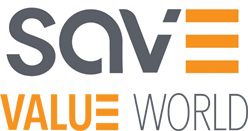By Donald E. Parker, CVS – Director, Miles Value Foundation
In value methodology we define functions for products, projects, or processes by using two words – an active verb and a measurable noun. Lately, however, criticism has been heard when one uses verbs and nouns to abstractly define the basic function, as well as supporting functions with verbs and nouns, which are then called improper because those supporting functions are activities or tasks.
One of Larry Miles’ favorite statements was, “People don’t want to bait hook, they want to catch fish!” What you have to realize is that bait hook is a task and catch fish is an activity. You might ask, why catch fish? The higher order functions might be eat fish in order to obtain protein in order to maintain health. Here is a simplified FAST diagram:

Of course, you realize that many other functions of the above process could be added in their proper locations, such as: preserve fish, clean fish, cook fish, serve fish, eat fish, etc. All of these are additional activities and tasks with additional costs. Also, the basic function changes for the study if the left scope line of the above FAST diagram is moved one space to the right. Then the basic function becomes catch fish instead of obtain protein.
One of the mind tuning requirements of value methodology is to recognize when function cost does not equal function worth (this is our definition of bad value). According to Miles, recognizing this disparity is one of the motivational forces toward inspiring the team toward improving value.
Therefore, the next process in our methodology is to determine the function cost of the function you want to study and to change in order to improve value compared to the above existing method to maintain health.
To obtain the basic function cost to be studied you need to determine all the costs for all the supporting activities and tasks, because that is HOW the basic function is being achieved. If you make all those supporting functions abstract (see next figure) then you won’t know you are studying a fishing process and will never be able to allocate cost to those functions.

If maintain health is your goal or higher order function, then the cost of achieving that is the sum of all the costs of the functions shown to the right.
If obtain protein is your basic function, then the cost of achieving that is the sum of all costs of the function shown to its right. And to determine that cost you’d better know and document the cost of all the activities and tasks that lead up to achieving the function you want to study.
Your FAST diagram should not be so abstract as to lose sight of the product or process you are studying. For example, studying ways to inform client is an okay study providing that your diagram indicates that your current process is to write letter and send by Federal Express. That way you won’t miss the function of document information that the current process provides and that an alternative way to inform client by telephone call does not provide.
You need to cost out the current method of informing the client by adding up the costs of all the supporting functions (tasks and activities) to achieve that end result.
Making a FAST diagram to show the existing way of doing something with current tasks and activities is essential in order to price it. And do not confuse the FAST diagram by inserting creative ideas as to how something might be done. It is easy to confuse your diagram by inserting things that are currently not real and not reflected in its current cost. I was taught to make a second FAST diagram during brainstorming to show your creative ideas to improving value.
Activities and tasks are functions and they do have cost. Identifying them and listing them might also lead you to study them at lower levels in the existing process to find that their cost-worth could be improved. Especially if you are Federal Expressing all letters rather than mailing them!
Miles said, “All cost is for function!” It follows that he then asked you to determine the value (worth) of each function to help you inspire change.
